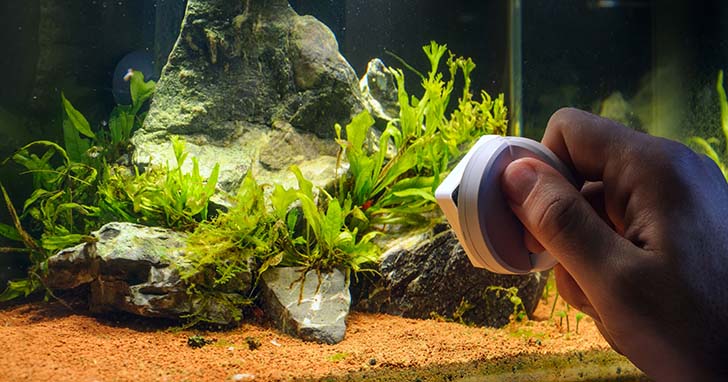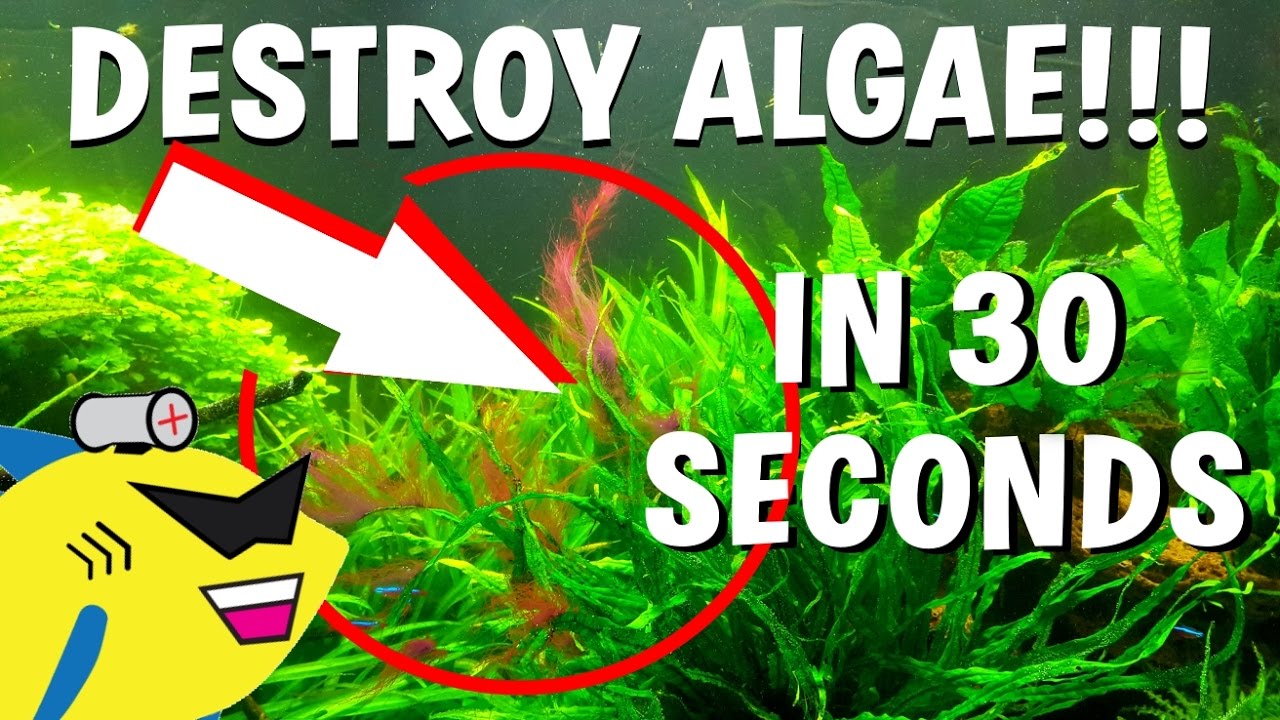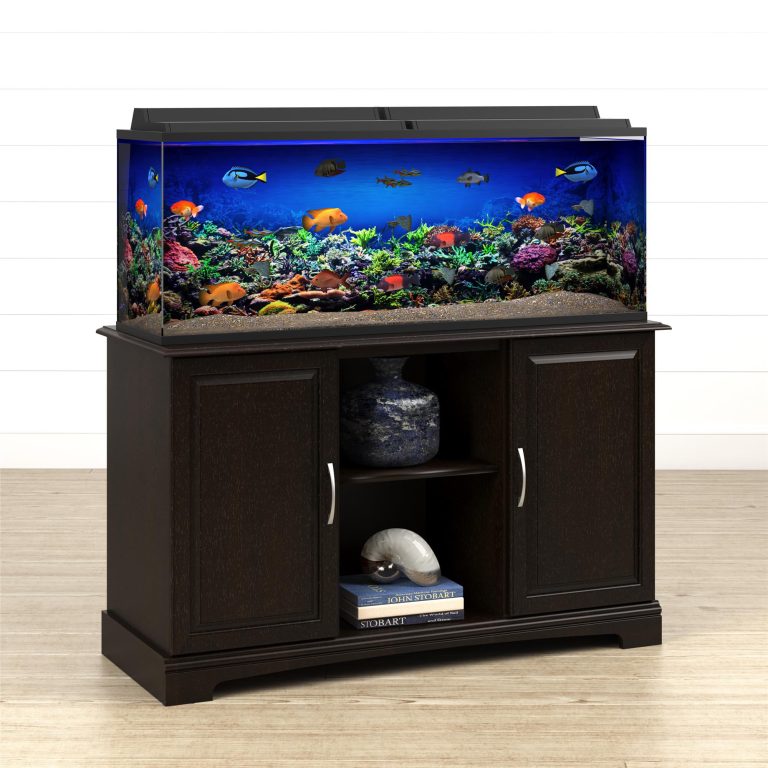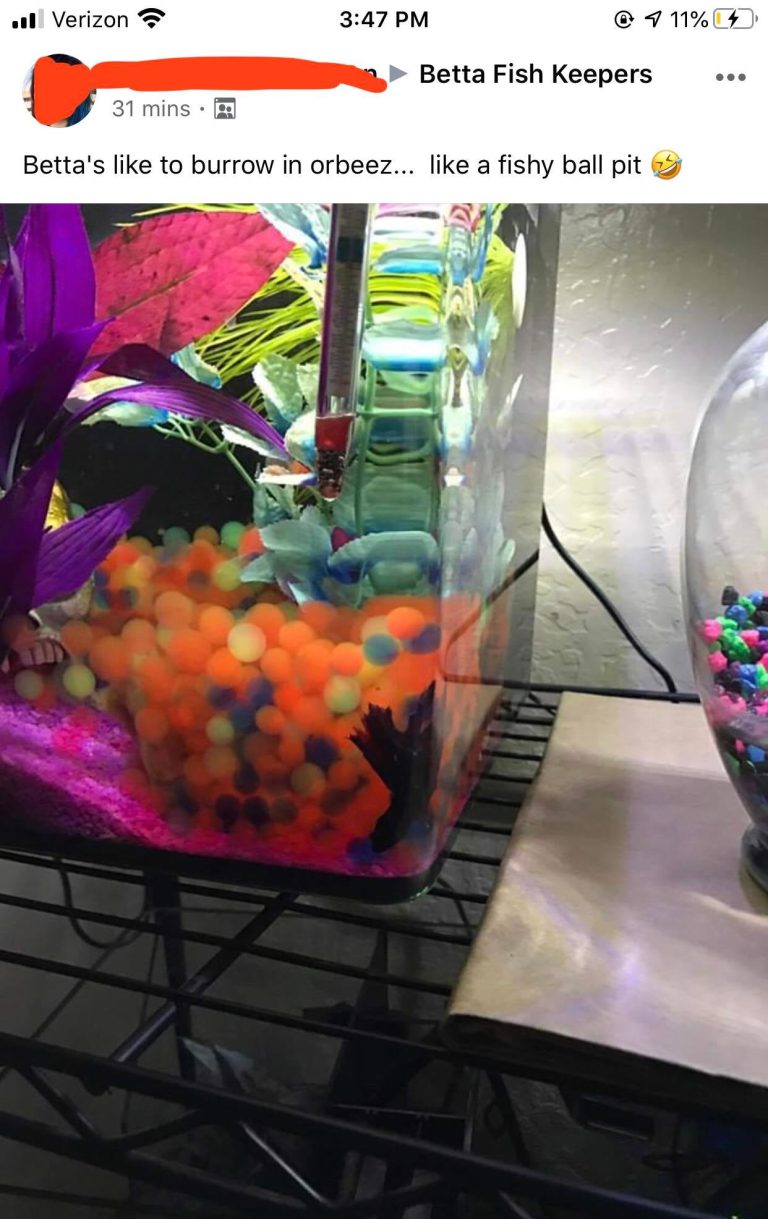Naturally Remove Algae from Your Fish Tank Today: Proven Method
Maintaining good hygiene habits, avoiding overfeeding, performing frequent water changes, adding live plants, and using algae eaters are all natural ways to get rid of algae in a fish tank. Having a fish tank can be an enjoyable hobby, but maintaining cleanliness in the tank can be quite challenging.
One of the common issues fish owners face is the growth of algae in the tank, which can be harmful to the plants and fish. Chemical treatments and solutions are readily available, but they come with their own set of problems.
Luckily, there are several natural ways one can get rid of algae in a fish tank without resorting to chemicals. By maintaining good hygiene practices, using live plants, and introducing algae eaters, maintaining a clean fish tank is possible without introducing harmful chemicals. This article will explore natural ways to get rid of algae in a fish tank.

Credit: www.liveaquaria.com
What Causes Algae To Grow In Fish Tanks?
Algae growth is a natural occurrence in fish tanks, but it can quickly become a frustrating problem for many aquarium owners. Not only does it look unsightly, but it can also negatively affect the health of your fish. Fortunately, there are ways to get rid of algae in your fish tank naturally.
We will delve into the different causes of algae growth, which will help you take effective action to combat this issue.
Common Sources Of Nutrients That Fuel Algae Growth In Fish Tanks
Algae growth needs certain nutrients to survive and multiply, and aquariums can offer an abundance of them if not adequately maintained. Some common sources of nutrients include:
- Extra fish food and fish waste
- Unfiltered water
- Overfeeding your fish
- Live plants that have started to decompose
- Inadequate cleaning practices (such as not changing the water frequently enough, algae scrubbing too infrequently, etc.)
Types Of Sunlight Exposure That Stimulate Algae Growth
Sunlight is another major factor that plays a role in algae growth. Direct sunlight exposure can provide a significant boost to algae growth. If your fish tank is positioned in an area of your home that receives frequent and direct sunlight, algae growth may be more challenging to control.
Some types of sunlight exposure that stimulate algae growth include:
- Direct sunlight exposure
- High-intensity aquarium lights
- Bulbs that produce an excessive amount of heat
- Leaving aquarium lights on for too many hours in the day
Effects Of Ph, Temperature, And Other Environmental Factors On Algae Growth
Maintaining the right environment is key to controlling algae growth, and environmental factors such as ph, temperature, and water hardness can also play a role. Here are some things to keep in mind:
- Algae thrives in temperatures around 68 to 82 degrees fahrenheit, so ensure that your aquarium is not too warm.
- The ideal ph range for most aquariums is between 6.5 and 7.5.
- Water hardness levels should be neither too hard nor too soft.
Knowing what causes algae growth in fish tanks is the first step in maintaining a healthy and thriving aquarium. Keeping a clean and healthy environment, avoiding excessive sunlight exposure and maintaining the right temperature, ph, and water hardness levels are essential steps in controlling algae growth.
By following these guidelines, you can ensure that your fish tank remains a beautiful and healthy home for your fish.
Why Should You Remove Algae From Your Fish Tank?
Algae growth is a common issue among aquarium owners. It can be unsightly and can even affect the health of your fish. That’s why removing algae from your fish tank is crucial. In this post, we’ll delve into the reasons why it’s important to have a clear and algae-free tank for both fish and humans.
Keep reading to learn more!
The Negative Effects Of Algae Growth On Fish Health
Having excess algae in your fish tank can result in various negative impacts on your fish’s health. Some of the consequences of unchecked algae growth include:
- Reduced oxygen levels: This occurs when the algae consume oxygen, which affects the quality of the water and therefore, the fish’s ability to breathe.
- Alkaline water: When algae take over your tank, they can make the water more alkaline, which can be dangerous for certain fish species that require neutral or acidic water.
- Toxin buildup: Algae produce toxins that can harm fish. In addition, they can absorb toxins from the water, which can then be ingested by your fish.
How Unsightly Algae Can Detract From The Beauty Of Your Aquarium
Algae not only pose a threat to fish health but can also detract from the aesthetic appeal of your aquarium. If unchecked, the algae can cover the tank, making it look dirty and unattractive. Some of the other ways the unkempt algae can detract from your aquarium’s beauty include:
- Obstructing the view of your fish: When the algae grow excessively, they can cover the glass or acrylic walls of the tank, making it difficult to see your fish clearly.
- Making the tank look dirty: Algae growth gives the impression that the aquarium is not being adequately cared for, thereby defeating the purpose of having a beautiful fish tank in your home.
The Benefits Of A Clear And Algae-Free Tank For Both Fish And Humans
A clear and algae-free tank has numerous benefits, both for your fish and for you as the owner. Here are some of those benefits:
- Healthy fish: When your aquarium is free of algae, your fish are happier and healthier, which can lead to a longer lifespan.
- Reduced maintenance: With regular algae removal, you’ll have to perform less frequent water changes and scrubbing of surfaces, saving you time and effort.
- Aesthetic appeal: A clear and algae-free tank is not only visually appealing but can also reduce stress and anxiety, helping you relax and unwind.
- Healthier air quality: With a cleaner tank, you will have healthier air quality in your home, as algae release carbon dioxide into the air.
There are both aesthetic and health-related reasons for removing algae from your aquarium. To ensure your fish’s continued health and happiness, it is essential to keep your tank free of algae growth. Use the knowledge gathered in this post to help you keep your aquarium clear and clean.
Natural Methods For Removing Algae From Your Fish Tank
Having a fish tank can be a relaxing and therapeutic experience, but dealing with algae growth can be frustrating. Luckily, there are effective and natural ways to get rid of algae in your tank. We will explore the best natural methods for removing algae from your fish tank, provide step-by-step instructions for cleaning and maintaining your tank, offer tips for preventing future algae growth, and discuss the advantages of natural methods over harsh chemical treatments.
Introduction To Safe And Natural Cleaners For Removing Algae
When it comes to cleaning your fish tank, it is important to avoid harsh chemicals that can harm your fish or damage the tank’s ecosystem. Here are some safe and natural cleaners that can effectively remove algae without harming your fish:
- White vinegar: A natural acid that can break down algae build-up
- Algae scrubber brush: A gentle brush designed to remove algae from tank surfaces
- Magnetic glass cleaner: A tool that uses magnets to clean the inside of your tank without harming your fish
Using these natural cleaners, you can safely and effectively clean your tank without putting your fish at risk.
Step-By-Step Instructions For Cleaning And Maintaining Your Tank
To keep your fish tank healthy and free of algae, it is essential to clean and maintain it regularly. Here are some step-by-step instructions for cleaning your tank:
- Turn off all electrical equipment in the tank, including filters, heaters, and lights.
- Remove any decorations, plants, or accessories from the tank.
- Use the algae scrubber brush to gently remove algae from the walls and surfaces of the tank.
- Soak the decorations and accessories in a mixture of warm water and white vinegar for 30 minutes.
- Rinse everything thoroughly with warm water.
- Use the magnetic glass cleaner to clean the inside of the tank.
- Change 10-15% of the water every week to prevent algae growth.
- Monitor the temperature, ph level, and ammonia levels in the tank regularly to maintain a healthy tank ecosystem.
By following these simple steps, you can keep your fish tank clean, healthy, and free of algae.
Tips For Preventing Future Algae Growth
Prevention is always better than cure when it comes to algae growth. Here are some tips to prevent future algae growth in your tank:
- Reduce the amount of light your tank receives: Algae need light to grow, so limiting the amount of light that enters your tank can help control algae growth.
- Use a timer for lights: Set a timer so that your tank’s lights are on for no more than 8-10 hours per day.
- Control nutrient levels: Algae thrive on excess nutrients, so limit the amount of food you give your fish and avoid overfeeding.
- Add live plants: Live plants can help control algae growth by absorbing nutrients and competing with algae for resources.
By implementing these preventative measures, you can reduce the risk of algae growth and maintain a healthy aquarium ecosystem.
The Advantages Of Natural Methods Over Harsh Chemical Treatments
While it may be tempting to use harsh chemical treatments to remove algae quickly, these treatments can harm your fish and damage your tank’s ecosystem. Natural methods, on the other hand, are safe, effective, and environmentally friendly. They do not harm your fish, and they help maintain a healthy and balanced tank ecosystem.
By using natural methods to remove and prevent algae growth in your fish tank, you can enjoy a beautiful and healthy aquarium for years to come.
The Top 5 Natural Cleaning Agents For Removing Algae From Your Fish Tank
If you have a fish tank, one of the biggest challenges is keeping it clean and healthy. One common problem is algae buildup, which can not only make the tank look grimy but also harm the fish. While many people opt for chemical treatments to remove algae, there are natural options available that are both effective and safe for fish and plants.
In this post, we’ll explore the top 5 natural cleaning agents for removing algae from your fish tank.
Baking Soda: A Gentle Yet Effective Way To Scrub Away Algae Buildup
- Mix a solution of 1 tablespoon baking soda per gallon of water
- Use a scrub brush or sponge to scrub away algae buildup
- Rinse thoroughly with water before refilling the tank
Hydrogen Peroxide: A Versatile Cleaner That’S Safe For Both Fish And Plants
- Mix a 3% hydrogen peroxide solution with water in a ratio of 1: 10
- Dip a clean cloth in the solution
- Use the cloth to gently wipe away algae buildup
- Let the solution sit for a few minutes before rinsing thoroughly with water
Vinegar: A Powerful Natural Acid That Dissolves Algae
- Mix a solution of 1-part vinegar and 1-part water
- Soak any affected decor or equipment in the solution for a few hours
- Use a scrub brush or sponge to remove any remaining algae
- Rinse thoroughly with water before placing the decor or equipment back in the tank
Algae-Eating Fish: A Natural And Effective Way To Control Algae Growth
- Choose fish that eat algae, such as siamese algae eaters, otocinclus catfish, or plecos
- Be mindful of the size and number of fish you add to the tank to avoid overcrowding and water contamination
- Note that some algae-eating fish require specific water parameters, so do your research beforehand
Activated Carbon: A Long-Term Solution For Preventing Future Algae Outbreaks
- Add activated carbon to the tank’s filtration system
- The carbon will absorb any impurities, including excess nutrients that can contribute to algae growth
- Replace the carbon every 4-6 weeks for optimal effectiveness
By opting for natural cleaning agents and using preventative measures, you can keep your fish tank healthy and free of algae buildup. Incorporating these solutions into your regular tank maintenance routine will promote a healthy environment for your fish and make the tank look visually appealing at the same time.
Frequently Asked Questions For How To Get Rid Of Algae In Fish Tank Naturally
How Does Algae Grow In Fish Tank?
Algae grows in a fish tank due to excess light, nutrients, and co2.
Why Is Algae Harmful To Fish Tank Inhabitants?
Algae can reduce oxygen levels and affect water quality that can be harmful to fish health.
What Are Natural Ways To Get Rid Of Algae In Fish Tank?
You can reduce light exposure, increase water movement, add live plants, and use algae-eating fish.
How Often Should I Clean My Fish Tank To Prevent Algae Growth?
It’s important to clean your fish tank once every 1-2 weeks, including removing debris and dead plants.
Conclusion
To sum it up, taking care of your fish tank is not only beneficial for the health of your aquatic pets but also for their appearance. Algae can be a common problem in fish tanks, but it’s not unsolvable. Using natural methods to get rid of algae is a great way to avoid harsh chemicals that can harm your fish and plants.
Maintaining the cleanliness of your tank by changing the water regularly, controlling the amount and duration of light exposure, and adding various natural algae eaters like snails and shrimps can all contribute to a clean and healthy environment for your fish.
Ultimately, the best way to avoid algae buildup is to strike a good balance between feeding your fish, light exposure, and performing regular maintenance tasks. With these tips, you can say goodbye to algae and hello to a crystal clear, healthy fish tank for your aquatic friends.






